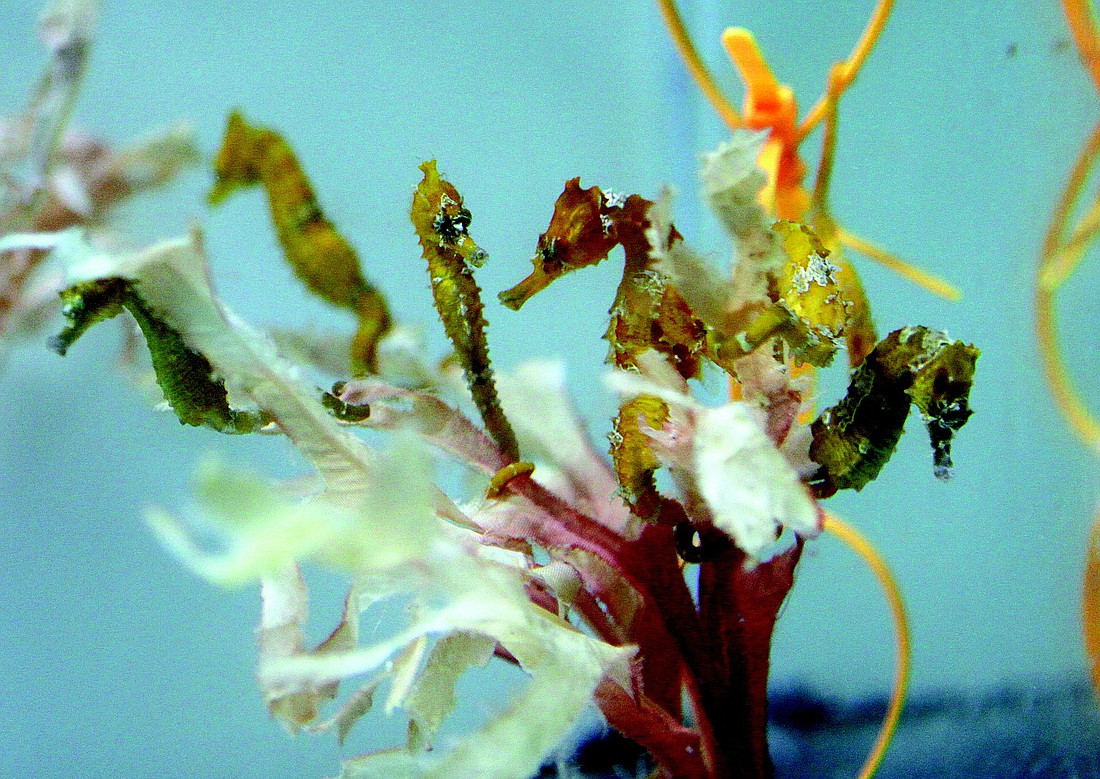- April 19, 2024
-
-
Loading

Loading

They’re the only species with a face like a horse, pouch like a kangaroo, tail like a monkey, skin like a chameleon and fins like a fish —and they’re the only species where the males become pregnant. And, should the males not feel up to mating, they have the ability to “fake” being pregnant by filling up their bellies with water.
Lab supervisor Shawn Garner provides even more facts about seahorses during Mote Marine Laboratory’s Seahorse Conservation Lab tours.
Garner earned his bachelor’s degree in aquatic biology at Ball State University and has raised and bred seahorses for about 12 years. He joined Mote Marine in 2007, when the aquarium dedicated only a small exhibit space to seahorses that was not open to the public.
With the average survival rate of seahorses in the wild being one in 1,000 and their survival rate at Mote Marine being one in two — the highest in the country — it took only about a year before the lab outgrew its space, all because Garner cares for the little creatures like they’re family. In fact, he even makes colorful homemade twist-tie toys for them, adds vitamins to their food to help them grow and also invented a feeding cone that has saved the organization a considerable amount on the cost of food.
“The 4- to 5-month-olds are like 13-year-old boys, always wrestling, punching and rough-housing,” Garner said. “They hold on to each other with their tails because they feel comfortable. In the wild, you won’t see huge groups of seahorses do that.”
Guests can see how Garner raises lined seahorses, a species from Southwest Florida often found in aquariums, and learn about everything from breeding and coloration to camouflage and diet. Guests are informed of the threats seahorses face in the wild and how Mote breeds them for conservation.
Mote’s seahorses are displayed in more than 40 aquariums, zoos and science institutions around the country.
Garner is getting ready to ship 24 seahorses to Monterey Bay, Calif.
“If one zoo gets one seahorse from us and not from the wild, it’s equivalent to saving 1,000 seahorses,” Garner said. “I ship three seahorses per plastic bag and use zip ties and make toys for them so they have something to do besides poke each other during the rumblings of the airplane. It’s a labor of love.”
FAST FACT
Creature comfort: Adopt a seahorse by visiting www.mote.org/adopt.
IF YOU GO
Seahorse Conservation Lab tours begin at 11 a.m. on most Thursdays, last approximately 45 minutes and can accommodate up to six guests. Tours cost $20 and do not include general admission to Mote Marine Aquarium. They are not recommended for children younger than age 10.
To purchase tickets, call 388-4441, Ext. 536, or e-mail [email protected]. Visit www.mote.org/seahorsetours.com.
Contact Loren Mayo at [email protected]